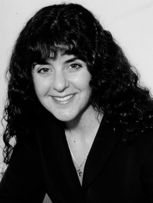All babies are miracles, some more than others. The Advent and Christmas Scripture readings bring this home to us, with tales of unexpected babies being delivered against all odds. These themes resonate in a special way this Christmas season, as I hold our newborn girl. She was an unexpected blessing and a difficult pregnancy, full of dire doctors’ warnings about potentially grave health problems for us both. We beat the odds, with access to excellent health care and insurance to cover the costs.
Many women and children are not beating the odds. Every minute somewhere in the world a woman dies in childbirth. Another 10 to 20 million women each year suffer severe injury, infection and disease as a consequence of childbirth. Conditions like pre-eclampsia (pregnancy-induced high blood pressure that causes the mother’s organs to shut down), gestational diabetes, anemia and pre-term labor are manageable health conditions for women with access to modern care. But for millions of others these remain killers. Hemorrhage, infection, high blood pressure, obstructed labor and crude abortions cause 70 percent of all maternal deaths, according to the World Health Organization, but “unavailable, inaccessible, unaffordable, or poor quality care is fundamentally responsible.” These death rates have not changed over the past 20 years. Experts believe the problem is actually worse than this, because death rates are underreported. Poor women do not count, even in death.
Eight years ago, many people hoped these dismal statistics would change as the world pledged to improve maternal health. The largest-ever gathering of heads of state marked the new millennium by adopting eight Millennium Development Goals to be achieved by 2015. One hundred eighty-nine countries pledged to reduce maternal mortality by three quarters between 1990 and 2015 and to achieve universal coverage with skilled care at birth by 2015.
The goal is still distant, halfway to the target year. As U.N. Secretary General Ban Ki-moon notes: “Maternal health stands as the slowest-moving target of all the M.D.G.s. US $10 billion would ensure coverage of basic services for maternal, newborn and children’s health. More investment for training community health workers would be a strong step towards strengthening health systems.” In recent years, governments and nongovernmental aid groups increased attention and funding for H.I.V./AIDS and malaria relief in developing countries. But this investment has not been forthcoming for maternal health.
The United States has the highest maternal mortality rate of all industrialized countries except Latvia. In Ireland only one woman in 48,000 dies in childbirth. The rate is more than 10 times higher here in the United States, which was ranked 41st out of 171 countries in maternal death. The death rate is even worse for African-American women in the United States, who are four times more likely to die in childbirth than white women. Catholic Relief Services is working hard in Sierra Leone, where the problem is worse. One out of eight women there die in childbirth.
This is not like beating cancer, where cures are lacking and treatments extremely expensive. We know what to do to save mothers, and often the simplest interventions work miracles. A World Health Organization maternal health kit in Rwanda consists of a clean razor blade and string to cut and tie off the umbilical cord, and a clean cloth to absorb the bleeding. These simple objects drastically improve a Rwandan mother’s chances of surviving childbirth. We have the technology, and the cost is low. The problem is that women’s lives are not valued in many places. Betsy McCallon of the White Ribbon Alliance for Safe Motherhood notes, “There is not that sense of demand that this is unacceptable, so it continues to happen.”
Sarah Brown, the wife of the British prime minister, argues that maternal mortality “shames us all. With sufficient political will, we can live in a world where women do not have to fear for their own lives at the moment when they are giving life to others.” Norway’s Prime Minister Jens Stoltenberg concurs, citing the ready money available for bailing out banks: “Money doesn’t seem to be a problem when the problem is money…but funds for investment in people are so short in supply.” Marian Wright Edelman, founder and president of the Children’s Defense Fund agrees that “this is not a financial problem; this is a priorities problem.”
Saving mothers benefits all of society. According to the W.H.O.: “Motherless children die more frequently, are more at risk of becoming malnourished and less likely to enroll in school.... Public funding for maternal and child health care is justified on grounds of equity. Motherhood and childhood are periods of particularly high vulnerability because women and children are more likely to be poor. Women are more likely to be unemployed, to have lower wages, less access to education and resources, and more restricted decision-making power, all of which limits their access to care. Public investment in maternal and child health is justified in order to correct these inequities.”
Now is an opportune time to help shape the priorities of the new administration and Congress, and encourage them to keep their promises of improving health care here and abroad. Mary said yes to life, knowing the dangers. But we spend more on Madonna and child Christmas cards and stamps than we do on today’s women and children at risk. As we celebrate our Savior’s birth in poverty, let our actions match our reverence for the Madonna and child, welcoming life against all odds.








